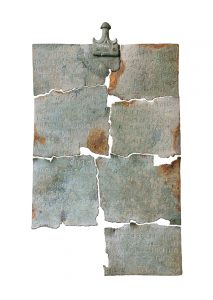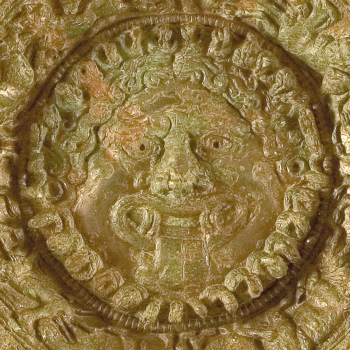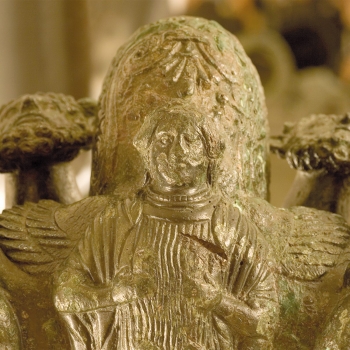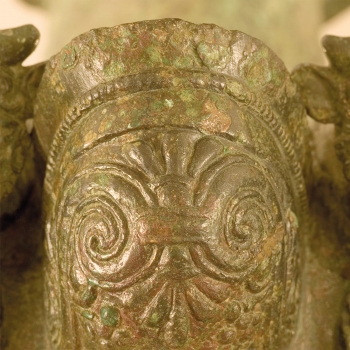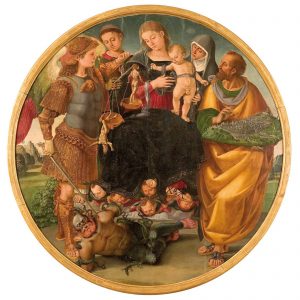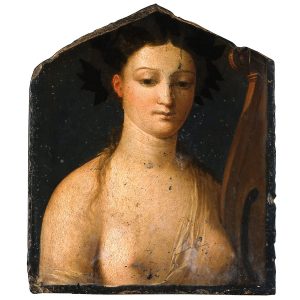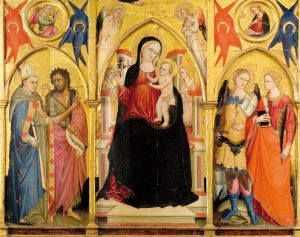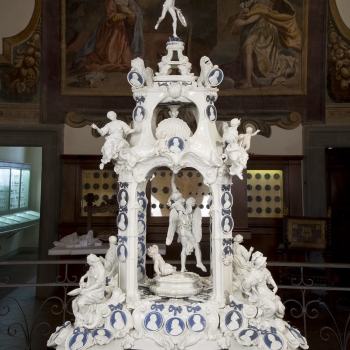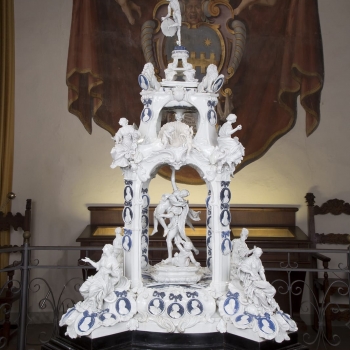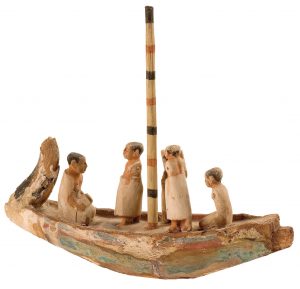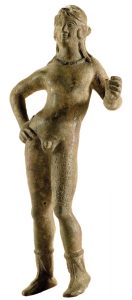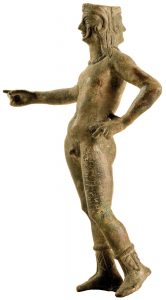Explore our most popular masterpieces
HIGHLIGHTS FROM THE COLLECTION
This page presents a selection of symbols that are most representative of the Museum, our must sees. Open the icons below to see the images of our most popular masterpieces, useful to understand the MAEC Museum and the variety of objects kept at the Museum.
3rd – 2nd century BC
Tabula Cortonensis
The Tabula cortonensis is the third longest Etruscan text, is thought to be a notarial act concerning the sale of land owned by oil merchant petru scevaś and his wife arntlei to members of the cusu family. It was found in 1992 and the history of its discovery remains unclear.
The seven bronze fragments formed a rectangular tablet (11,2 x 18 inches) bearing an inscription made with a very sharp chisel; the alphabet is the one used in the Cortona area between the end of the 3rd and the 2nd century BC.
Half 4th century BC
The Etruscan Chandelier
Was found in 1840 in the countryside surrounding Cortona, in Fratta and it immediately became part of the academic collection and is one of the must see and and most significant objects in the Museum.
The chandelier was intended for a sacred edifice and was manufactured in a workshop of central-northern Etruria, probably near Orvieto, around the half of the 4th century BC.
Second quarter of the 6th century BC
Gold fibula

This gold arched- fibula depicting a crouching panter, first escaped the attention of ancient plunderers and may be dated to the 2nd quarter of the 6th century BC.
End of the 15th century
Tondo by Luca Signorelli
The painting was originally attributed to Francesco Signorelli, Luca’s nephew but recently attributed to the Maestro himself (Luca Signorelli, 1453-1523).
The Tondo depicts the Virgin with the Child and Saints Michael, Vincent, Margaret and Mark; the latter holds a model of the town of Cortona.
16th or 18th century
Musa Polimnia
Is one of the symbols of the Accademia Etrusca; donated by Luisa Bartolozzi Tommasi in 1851. It is an encaustic painting slab of slate, made according to ancient tradition schemes and dated in the 16th or 18th century.
1425-1430
Triptych depicting Virgin with Child and Saints
Tempera and gold on panel it was part of the Tommasi Baldelli collection acquired by the Accademia in 1933; the triptych was probably made of more structural elements, by Bicci di Lorenzo, Florentine painter (1373-1452), datable between 1425 and 1430.
1756
Tempietto Ginori
The Tempietto was donated to the Accademia in 1756 by marquis Carlo Ginori on the occasion of its appointment to lucumo. The porcelain temple was manufactured at the Doccia porcelain factory and is an allegory of the Medici succession and the passing under the Lorraine rule; together with 76 medallions with portraits of the Medici family, dominated by the central group depicting Beauty kidnapped by Time, inspired by the celebrated work by Giambologna.
Second half of the 6th century BC
Tufa funeral bed
 The bed consists of three juxtaposed tufa blocks resting on shaped feet; its front portion has a low-relief decoration depicting a scene of mourning; the decoration shows eight kneeling female figures: the two in the centre cover their face.
The bed consists of three juxtaposed tufa blocks resting on shaped feet; its front portion has a low-relief decoration depicting a scene of mourning; the decoration shows eight kneeling female figures: the two in the centre cover their face.
It was found in tomb A of the François tomb in Camucia.
Middle Kingdom (about 2060-1785 BC)
Egyptian wooden funeral boat
The boat provides a depiction of the deceased going with a scribe and other assistants to check his property and receiving an accurate report of it; used to be laid in the tomb together with other grave-goods.
First half of the 3rd century BC
Bronze statuette of śelvanś
Bronze statuette śelvanś, is a naked male figure with a feral skin on his head, torques on the neck
The right hand La mano destra è appoggiata sul fianco della gamba corrispondente, tesa, mentre il braccio sinistro, disteso, doveva tenere in mano un attributo perduto e di incerta ricostruzione. Sulla coscia sinistra è incisa, su quattro righe, l’iscrizione v. cvinti arn tias selan sl tez alpan turce.
Ritrovata presso la porta Bifora a Cortona.
First half of the 3rd century BC
Bronze statuette of culśanś
Bronze statuette śelvanś, is a naked double-faced male figure with a feral skin on his head, torques on the neck e endromidi. La mano sinistra è appoggiata sul fianco in atto di riposo, mentre il braccio destro, a cui corrisponde la gamba tesa e portante, è disteso in avanti, con il punto semichiuso a reggere un attributo perduto (forse una chiave o un chiavistello).
Sulla coscia sinistra è incisa, su tre righe, l’iscrizione etrusca v. cvinti arnt ias culsansl alpan turce.



